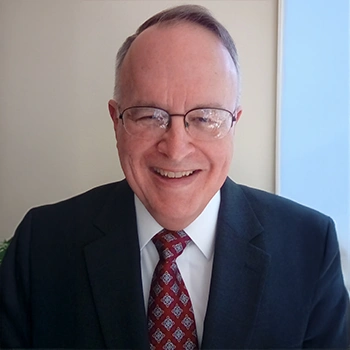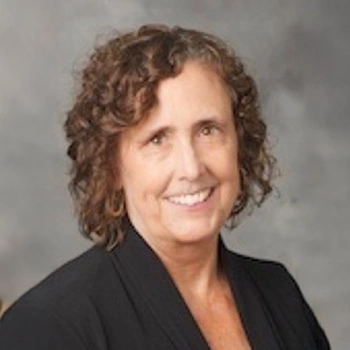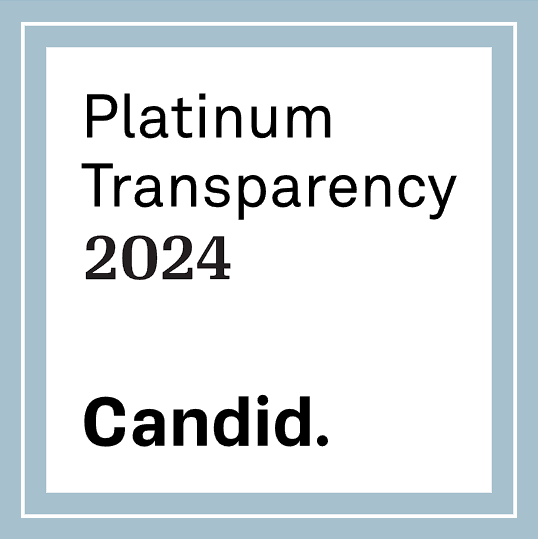The Deborah Gold, MD Champion Award is given annually to a physician volunteer who goes above and beyond in service to MAVEN Project and the safety net clinic providers we serve. We are honored to present the 2024 Champion Award to Fred Kleinsinger, MD.
What trends in medicine are you thinking about most right now?
American medicine is in crisis. We have the highest per capita expenditures of any country in the world, and we are one of few industrialized first-world nations without universal health insurance. Plus, a lot of money is wasted on administrative tasks—thousands of dollars are spent to determine someone isn’t eligible for something, or on procedures that don’t have a strong evidence base for effectiveness.
On the other hand, I’m delighted that DEI (diversity, equity, and inclusion) in medicine is finally being addressed. There are so many communities in this country with poor health outcomes because they are underserved and under-financed—which is central to MAVEN Project’s work and a great deal of its strength as an organization.
For example, we know now that black patients are offered fewer diagnostic tests, they’re considered less sensitive to pain, and they’re grossly underrepresented in health studies. If you’re working in a safety net clinic with a lot of patients who are minorities, you don’t know that the evidence you’re using is appropriate for them. What we can do is encourage practitioners to look at the literature about this and consider that medicine is very traditional, hierarchical, and slow-moving. This is another way that MAVEN Project is helping practitioners in underserved communities in important, unique ways.
There has been increasing press coverage of the national physician shortage. How is this affecting primary care?
The burnout rates in primary care exceed 40 percent, and fewer people are entering the field. Family medicine practices are not filling residences, whereas those in dermatology, orthopedics, and radiology are incredibly competitive. Primary care does come with its own lifestyle—more after-hours work and more time on call. And, I often say, we deal with people, not problems. If a patient sees an orthopedist about a sore knee, and also mentions a sore throat and ear pain, the orthopedist will probably tell them to talk to their primary care provider about the two latter issues. Whereas if that patient asks their primary care doctor about multiple concurrent problems, the buck stops with us to address them all.
So our workloads are extremely high, which leads to a lot of frustration and burnout. When you can’t live up to your own expectations, you feel like you’re compromising all the time. You’re always running late, patients get upset with you, and you don’t have time to reschedule them or deal with all their problems. Some in primary care end up leaving medicine altogether.
The burnout rate then deters young doctors from going into primary care, so it’s cyclical, and there’s no end in sight.
In what ways do you believe MAVEN Project can help bridge this gap, especially for patients in underserved areas?
MAVEN Project’s goal is to support practitioners who work in poor areas, both urban and rural. We know these populations have fewer options for care, worse health outcomes, and many more environmental and other contributing factors to poor health that aren’t being addressed. If burnout is a problem for practitioners in settings that are reasonably well-resourced, imagine what it’s like to work in a safety net clinic.
At MAVEN Project, I serve as a mentor one-on-one with practitioners, and I teach continuing medical education (CME) sessions. Last year, I helped MAVEN become accredited, meaning practitioners can use credits from MAVEN lectures to maintain their licensure and board certification. One of my ongoing goals is to make CME sessions as relevant as possible to safety net clinic practitioners.
What’s something endemic in the culture of medicine that you invoke as a mentor?
The medical profession can be very poor at communication. One of the things I teach is that our most important communication tools are on the sides of our head, not in the front. Doctors have a tendency to think that what we know and what we want to say is the most important thing. And of course, patients should listen and respect a professional’s expertise, and follow up with questions.
But what we’re slowly realizing is that American medicine is a team sport. When I was in medical school, there was a definite hierarchy with MDs at the very top, and everybody else was lower down. Now we understand that medicine is about collaboration. Doctors can sometimes be the leader of the team, but not in an authoritarian, patriarchal sense.
Second, modern CME doesn’t necessarily address issues that clinicians regularly face, like time management and dealing with difficult patients. But MAVEN’s approach to CME is more advanced —a lot of my colleagues like Scott Abramson do terrific workshops on these topics. They are addressing the needs of practitioners more effectively than your standard—and very expensive—university-based CME.
A couple of your areas of expertise are medication non-adherence and clinician-patient conflicts. What are some of your most valuable insights on these topics?
When I was practicing at Kaiser Permanente and saw patients with high blood pressure, I would tell them, “take this pill once a day,” and they weren’t doing it. My reaction was typical for the profession at the time—what’s wrong with them? Some people just cannot act in their own self-interest. But then I saw the same behavior in lawyers and college professors, and I realized that I can’t blame this problem on lack of education or low health literacy.
So I started to ask patients why they were having trouble taking their medication. I thought I had done a good job of making the problem and the consequences obvious—if you don’t treat diabetes, you could have a heart attack, stroke, retinopathy, or kidney failure. You could go blind or even die. Why wasn’t that clear?
Well, I was giving what I thought were very simple directions—you have to stick your finger painfully once a day, you have to take these medications, you have to give up every food that you like and exercise in a way that you never have in your lifetime. Do all that, and you’ll be fine! When I really started watching patients’ reactions, I realized that their eyes were glazing over. What I was asking for wasn’t simple to them.
In safety net clinical settings, patients are more likely to have low health literacy, and if they’re minorities, there’s a lot of distrust of American medicine that is well earned. You have to adapt your communication style in order for them to hear you and take your advice seriously.
What do you see as the roots of challenges for clinic providers?
Safety net clinicians see high volumes of patients with relatively low health literacy, so they spend more time on education, answering questions, and reaching unity so patients have the information they need to make decisions on their own behalf. Until recently, the classic paradigm of American medicine has been the opposite—doctors weren’t trained to see it as their responsibility to reach out to patients in a way that they could understand or relate to, and then participate in their own care. This is true throughout American medicine, but it’s an even bigger challenge within the very high workloads of safety net clinics. So where does MAVEN fit into this?
A lot of community health practitioners are nurse practitioners or physician assistants. They tend to be college graduates who’ve had two or three years of training that by necessity was more practical and focused, and less about understanding the mechanisms of disease. It would be much easier if it was one disease per patient, but safety net clinics are often dealing with five, six, or seven diagnoses at once. If you have more information, you can do a better job treating complex illnesses. And so that’s part of my goal—to improve the knowledge base that they’re working from so that they can feel more confident.
Looking back on your work with MAVEN Project, is there an interaction with a clinician that encapsulates these issues and how MAVEN can help?
I’ll give you one example of a really difficult safety net experience. I was working with a physician’s assistant who was 4 months out of PA school and working at a clinic in rural North Carolina. She was very smart and well-intentioned, but the clinic was a one-hour drive from the nearest emergency room and most specialists. The patients were poor and mostly didn’t have cars, and there was no public transportation that could meet that need. Imagine being the practitioner in that setting and how that would affect you.
In settings like this, MAVEN Project can make a big difference: when we mentor people, we can validate their difficulties; we can teach both clinical medicine and how to find work-life balance. We can offer support that isn’t available to clinicians otherwise.
Are there any medical innovations you’ve observed over the course of your career that continue to influence how you practice and/or advise others?
The electronic health record (EHR). I grew up in the era of the paper chart, and I’m the last person in the world to extoll its virtues. But the problem with EHR is that in its current manifestation, which is largely made by one company, it is adding to practitioner burnout because its systems are not well designed.
If a fire alarm goes off in your house, you’ll immediately run around looking for a fire. If the alarm goes off every 10 minutes, you’ll start to ignore it. That’s how EHR alerts are. And it’s worsening work-life balance for practitioners, who are seeing patients all day and then spending hours at night finishing their notes.
There’s also evidence that in the exam room, clinicians are relating more to their computers than to their patients, leaving patients wondering what they’re doing there. Additionally, practitioners are learning EHR to the extent that they can. Middle-aged and older doctors who aren’t as tech-savvy only learn the minimum level of functionality.
EHR represents a major advance in American medicine, but it comes with tremendous limitations, especially in safety net clinics that tend, in my experience, to have cheaper, less functional EHR systems. Clinicians may not know how to look things up or find information efficiently, and I can’t necessarily help them with that. So it’s one more issue that makes it harder to be a safety net clinic practitioner.
Many of your points underscore the paramount importance of human connection in medicine. Why is this element tied to impact when it comes to patient care?
Relating to patients isn’t necessarily critical in every medical interaction; if you’re an interventional radiologist and a patient needs anesthesia, communication is not particularly important. But in my field, interaction and relationships are everything. If we are really intent on educating and communicating with patients, they wouldn’t be ambivalent about taking their blood pressure medicine. They’d be saying, “I want my blood pressure medicine.”
Based on your own experience, why is MAVEN Project’s peer-to-peer model so effective in helping patients?
After practitioners finish all their medical training—their undergraduate, graduate, internship, fellowship, and residency—CME is supposed to keep them up to date. But the problem with most American CME is that the dominant format is passive didactic lecture. It’s a failure because it does not give you the information you need at the time you need it.
At MAVEN, we’re injecting information at the point of use. You actually get to talk to a specialist with expertise in the area you need about a specific patient, and on the spot, they’ll help you figure out what you need to do for that patient. And now that practitioner knows how to help the next patient. They’re learning by doing.
Ultimately, we also need political changes on a large scale to improve the whole structure of American medicine. MAVEN can’t do that, but within the existing circumstances, we can help people. We can help community clinicians do a better job in satisfying their patients’ needs.
A lifelong goal of mine has been to improve care for the medically underserved. So I’m very pleased that MAVEN gives me this opportunity. and that it even exists. We are improving the care people get in community health settings.






